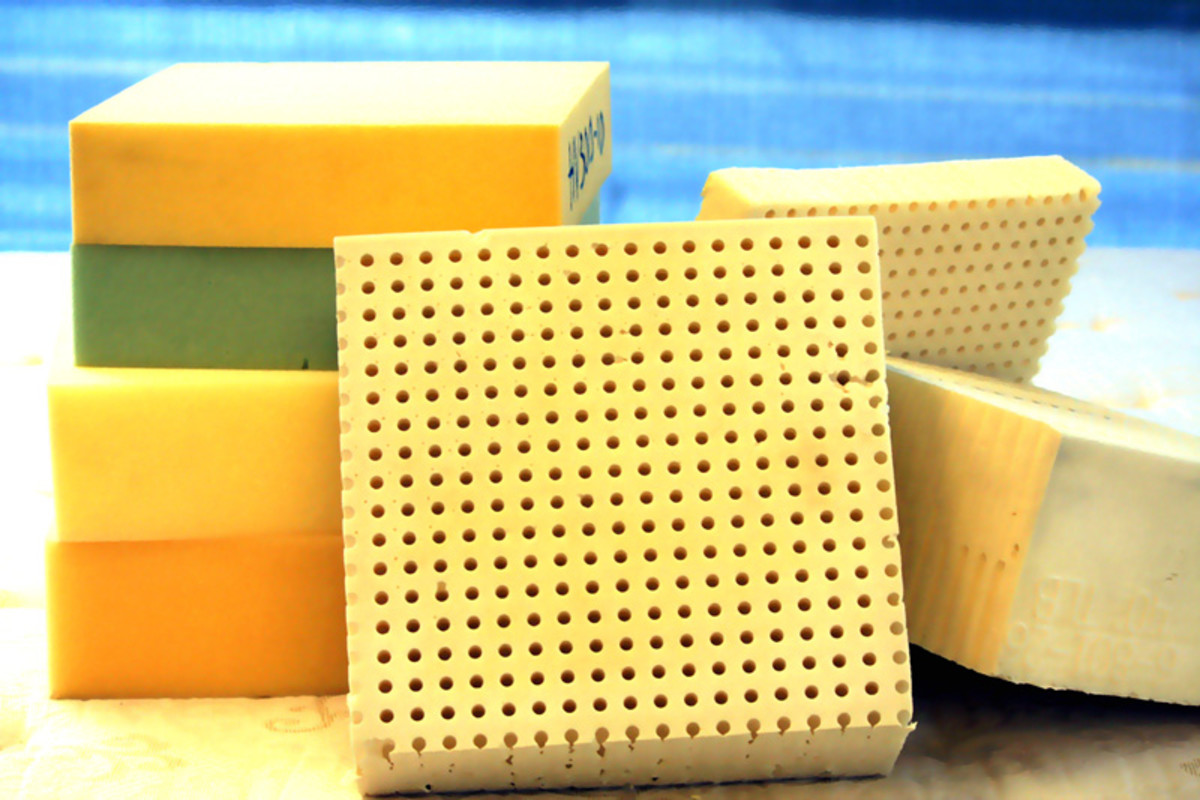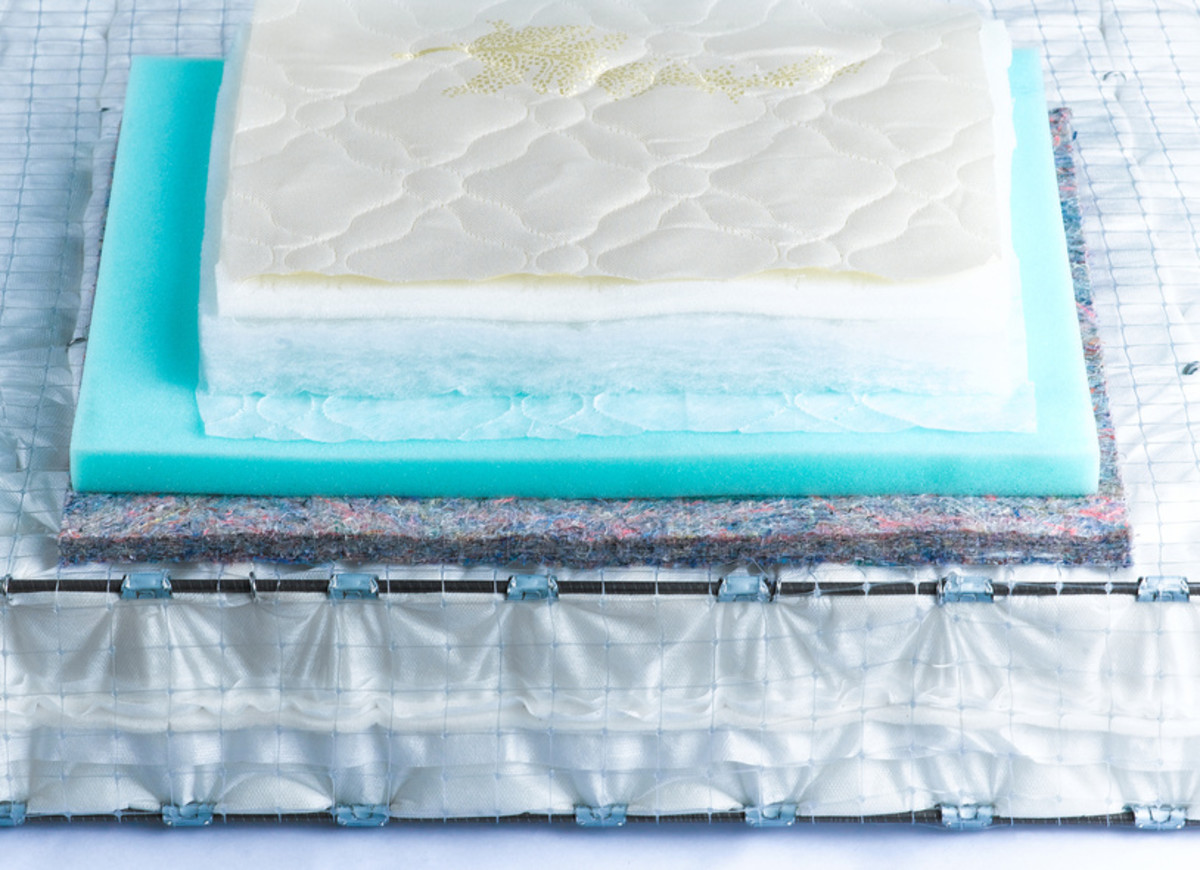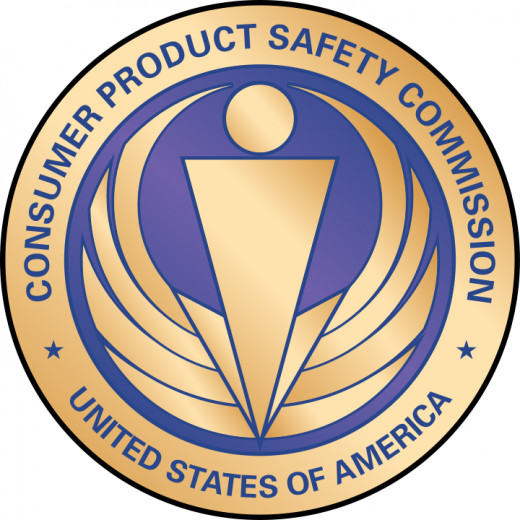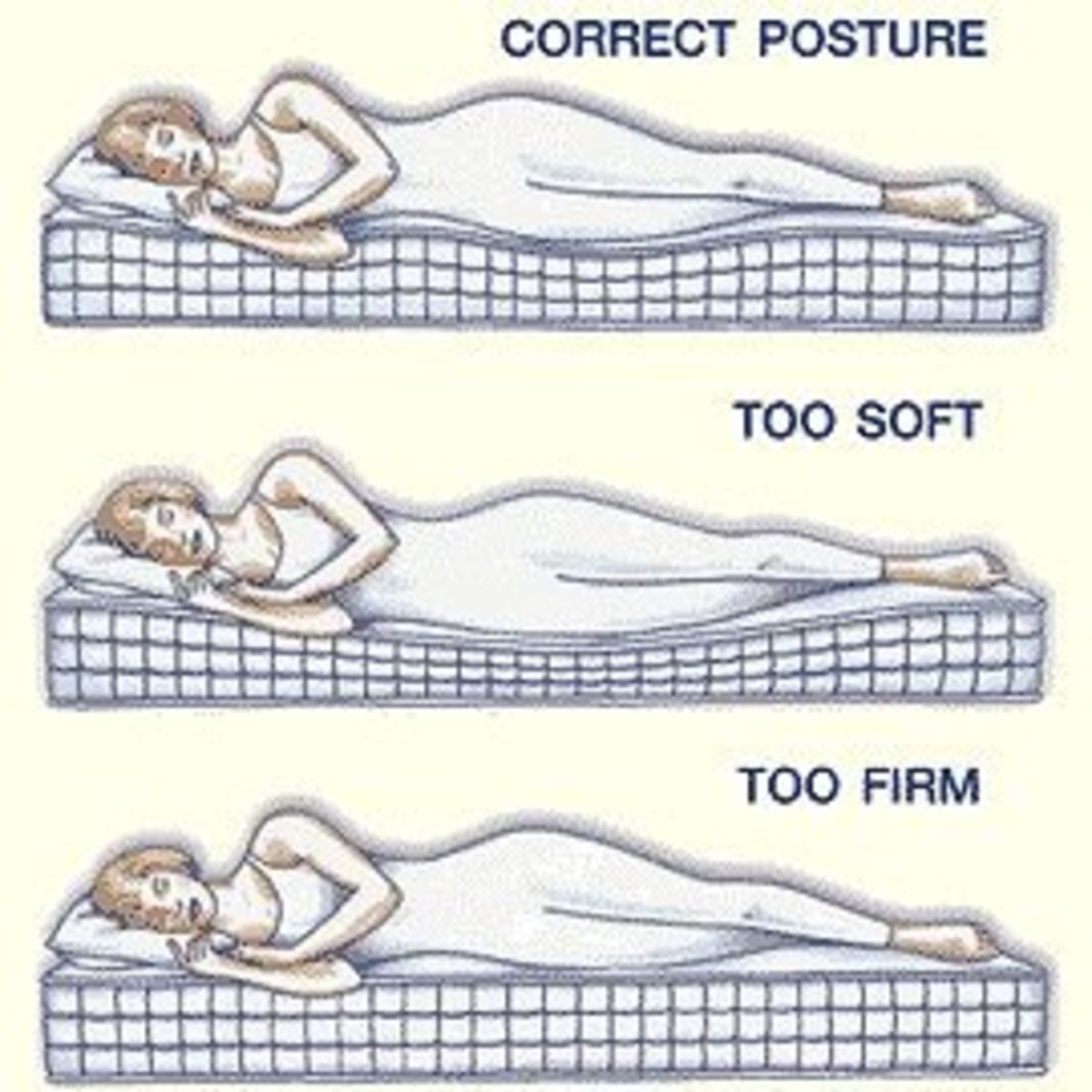What About Buying Organic and/or Eco-Friendly Mattresses Due to Off-gassing Concerns?

The 'Green Movement' and How it has Effected Mattress Consumer Perceptions
This article is not meant to diminish the concerns of diehard environmentalists - they have had a hard fight, and it continues to be hard at times, still today.
This information is for 'the rest of us' who somehow get caught up in the hype of debate.
Can you buy a toxic, chemical-infused mattress that will be harmful for you to sleep on?
YES, unquestionably.
Are there affordable mattress options around that?
YES, absolutely. I'll tell you all about them.
This was always a hot question in the mattress store that I worked at - you had to be careful until you 'got a feel' for that particular customer's opinion, before you could go into the subject of environmentally-friendly mattresses.
This is because the range of people's opinions about anything 'green', really - especially in a very green-conscious city like Seattle - go everywhere from 'absolutely no non-organic materials' to 'I don't care about that stuff!'
Both of these responses can get quite huffy, in fact. In places like the Seattle area, consumers have been so bombarded by the green movement - some of them will actually threaten to hurt you if you try to sell them an organic mattress!
Keep in mind that MANY of these places online that are giving you all this information about eco-friendly and/or organic mattresses are often times actually SELLING or promoting you their 'green' mattress options (or someone else's as an affiliate). You will not find one link to sell any mattresses within these mattress-buying articles because I am not promoting any. (I have no control over page ads. Use them at your own judgement.)
This is just real mattress-buying information as I know it from selling mattresses for five years.
The green movement tugs on heartstrings, AND is both real and profitable - so it can become a confusing place to get lost in for mattress customers who are trying to make good mattress buying decisions for themselves and their beloved family members.
- IF YOU or the person you are buying an organic mattress for actually has issues with breathing when you sleep in a normal bed now, then offgassing may be an issue for you - YES, you should probably stay on the eco-friendly mattress end of the spectrum.
For most people with this opinion however, this is something they have maybe overloaded themselves on during their 'green research' online. There are things like Polyester and made-made fabrics everywhere you go, everywhere you sit, and everywhere you breathe.
Do yourself a favor - ask yourself HOW organic you want this mattress to be and WHY before you buy it. This in and of itself will help you identify the correct eco-friendly mattress for you.

The Toxicity of Memory Foam & Regular Polyfoam vs. 'Organic' Versions
What do we mean when we refer to 'offgassing' in a mattress?
Offgassing is the release of a gas that was dissolved, trapped, frozen or absorbed in some material - it usually has a strong, chemical odor that can often be toxic when Human's breathe it into their lungs. These toxins can build up in our bodies over time and cause (sometimes serious) health problems.
Of course mattress consumers should be warned and aware of this. Also be aware that it is almost IMPOSSIBLE to buy a new mattress that won't offgass for at least awhile. If it's new - it will smell new. If you are sensitive to the smell - take the bedclothes off and leave the window open in your room while you're at work for a couple of days until it dissipates.
Also, the bedclothes on your mattress will do MUCH toward keeping you from directly breathing in any toxins. In fact, one of the best ways to fix a stinky-mattress issue is to put a natural topper on top so that you are even further away from the offending fumes - if it is a good, supportive mattress to begin with.
ALL Foam Contains Petroleum
ALL foam for furniture and mattresses is made with petroleum - ALL FOAM. And Memory Foam basically contains the SAME ingredients as regular polyfoam - it's just manufactured differently. Essentially, gas is infused into a foam matrix to give it those unique body-molding and shape-remembering characteristics.
THIS is why it can be so much stinkier than regular polyfoam.
While there are ways today to reduce the amount of petroleum and harmful chemicals used when manufacturing both memory foam and polyfoam - like, replacing some of the petroleum with soy - the soy replacement is SELDOM above 20% and usually hovers between 8% - 12%.
These foams are OFTEN exaggerated by mattress sales people as being 'soy-based' foams. But I'm sorry - even at 20%, this is obviously a sales gimmick (lie in my opinion) that mattress sales people use to sell customers a mattress so that they believe it to be 'more healthy' than they perhaps originally requested.
And while mattresses ARE made out of more healthy foams nowadays than what they used to be made out of pre-2005 - if you're a consumer looking for a SERIOUSLY-organic mattress; you're not getting what you're asking for by buying a mattress with 'soy-based foam' in it.
However, soy-based polyfoam is what almost ALL mattress manufacturers use today - this foam isn't nearly as bad to sleep on as it used to be pre-2005. It is still a good option for most people.

Can Polyfoam or Memory Foam in Mattresses be Made Without Petroleum?
On the flip side... Many mattress customers are looking for a new mattress without ANY petroleum in it. Keep in mind that petroleum is ALSO a 'natural' substance on this planet.
And while minimizing the use of this product and using it wisely would be a good thing; eliminating it is UNLIKELY to happen, because it is such a cost-effective and relatively harmless thing for MOST people.
The kind of foam that is used in mattresses is the same kind of foam that is used in your furniture, your car, your Yoga mat...
If your finances do not have room to spend on an expensive no-petroleum mattress; the alternatives are not nearly as bad for you, anymore - and they can be quite cozy to sleep on.
There are MANY 'organic' versions of 'Polyfoams' and Memory Foams on the market, today. And while these foams ARE manufactured with FAR LESS petroleum than traditional foam - often by replacing some of the petroleum with natural oils like flax seed oil or castor oil, etc...
ACCORDING TO MY FORMER FOAM REP - who worked for one of the foam manufacturer's that provided foam for just about every foam bed in the United States and many places around the World - they have Scientists & Chemists WORKING on this:
FOAM CANNOT BE STABILIZED WITHOUT THE USE OF ACTUAL PETROLEUM IN THE MIX!!
It does not MATTER that someone has placed an 'organic' certification on that mattress - that doesn't necessarily mean that there isn't ANY petroleum in it.
Remember... Petroleum is a natural, organic substance. Foam in mattresses CAN and DOES contain this substance, no matter WHAT your mattress sales person is telling you.
Why might your sales person tell you that a mattress doesn't contain petroleum when it probably DOES?
Because, many times THEY are being TOLD that by the manufacturer who makes the mattress. Mattress sales establishments are not often given much more information about mattress materials than they give out to mattress consumers asking for it.
And the mattress manufacturer isn't telling consumers the WHOLE truth because they CAN'T make the mattress with any less petroleum like so many mattress customers WANT.
So... They just don't tell you. They tell you about all the other healthier oils used in replacing some of the petroleum in the mattress, instead.
Is this an Okay business / industry practice toward mattress consumers?
Probably not. But, it does get people into 'the healthiest' options available today without having to address the run-into-the-ground debate of whether or not mattresses should be made using petroleum or not.
It's just not POSSIBLE to get a mattress without the ingredient of petroleum UNLESS you buy a mattress made of something other than foam - although again, some natural mattresses have less petroleum than others in an attempt to keep green consumers happy.
One company who seems to be diligently working on this issue is Magniflex - based in Italy (there are other companies but not many, look around). Magniflex organic foams are made using different plants to create different 'feels' of foam - for instance, the mallow plant (where marshmallows come from) creates a light, airy foam while other plants create firmer foams, etc. They use as little petroleum as possible - and claim to not use ANY petrol in some of their mattresses.
Like I said... Mattress manufacturers ARE working on the issue. But, it is an expensive, time-consuming effort.
And even then... If you are a mattress shopper with this kind of extreme ideal surrounding petroleum in mattresses because you'd like to help wean the world off of this substance: consider that trying to use petroleum in better, more environmentally-healthy ways is also a good thing.
A Latex mattress just MIGHT be a better option for you even though Latex does contain NATURAL petroleum byproducts - they don't pour petroleum oil into the mix.
If you take the time to choose a Latex mattress well - this kind of mattress is a very environmentally-friendly, sustainable and long-lasting mattress that not only eliminates offgassing issues; but DECADES after it finally wears out (because of the extra petroleum byproducts added into the mix), it will simply decompose harmlessly in a landfill without polluting the environment.
This is the difference between the wise and wasteful use of petroleum.

Fire Retardants and Available Mattress Alternatives
Despite what some of these articles alarm you with - most mattresses today are NOT SPRAYED with chemicals to make them fire-resistant. More often than not - it is a thin layer quilted within the top, comfort layers of the mattress.
Very seldom will you find a mattress made so cheaply at a 'real' mattress store - although do be careful of big box stores, discount department stores, and online.
There are so many information articles out there trying to warn mattress consumers about toxins - and yes, you need to be aware of that issue. Here's a typical blurb within in these articles that represents the repetitive nature of them:
"All mattresses are required by law to contain fire-retardant materials unless you receive a prescription from a doctor."
This is true, HOWEVER... A mattress does NOT have to contain toxic chemicals AT ALL in order for it to be fire-retardant enough to pass the open flame test.
Some mattresses - many times, a Latex or Cotton/Wool mattress, for instance, are already largely 'naturally' fire resistant to pass on their own merits. You don't need a doctor's note to purchase this kind of 'non-toxic' mattress. Hastings sells some very natural mattresses made out of things like horsehair - but you will pay dearly for them.
YES, some of these 'natural' mattresses still contain SOME fire-retardants - it IS difficult to find one without ANY. Let's talk about why fire-retardants are important in mattresses.

Why are Mattress Fire-Retardants Important & Why Did the Government get Involved?
Here's the story of a guy who did need a note and why - he bought a NORMAL, everyday Innerspring mattress that looks like it could be one from any mattress manufacturer - and needed that manufacturer to make it without the extra fire-barrier wrap.
The thing that is disturbing to me as a former mattress salesperson - when I see articles like the gentleman from Portland above; yeah, MAYBE he really did need a mattress for his daughter without fire protection for whatever reason...
But, it SOUNDS like he 'read about the toxic dangers' on the Internet; got worked up and worried about them (and who wouldn't!) - then did what he thought was the responsible, parental thing and went out of his way to make sure his daughter's mattress would not harm her.
But, would it have harmed her to begin with? THAT is the question.
Due to the enlightenment of the Green Movement - foam in mattresses and furniture in the United States today no longer contains the harmful substance of Polybrominated diphenylethers (PBDEs). (Although you of course need to watch for furniture manufactured before 2005).
This is a good International report reviewing alternative Fire Retardants to PBDE.
Believe it or not, there are very good REASONS for the Federal Government to have gotten involved in making fire-retardant standards in mattresses more strict.
Here's a Seattle story in 2010 about a tragic house fire that was probably caused by old mattresses being too close to a light bulb.
The original concern for this regulation being enacted was because TOO MANY cigarette smokers and candle-burners were killing themselves along with members of their families; AND fires can cause massive property damage, displaces people, takes time to rebuild buildings, etc. - not to mention, they can get out of hand and destroy entire blocks of buildings at a time.
FIRE was one of the main scourges of the Old West - entire towns were burned to the ground by fire. It was a very dangerous thing for early frontier settlers.
As a result, fire is something this country - as well as most every other country - has always been very conscientious about.

What Do Government Reports Say About the Safety of Fire-Retardants in Mattresses?
Here are a few quotes from the CONSUMER PRODUCT SAFETY COMMISSION'S Final Rule: Standard for the Flammability (Open Flame) of Mattress Sets
"The Commission is issuing this flammability standard to reduce deaths and injuries related to mattress fires, particularly those initially ignited by open flame sources such as lighters, candles and matches."
..."needed to protect the public against unreasonable risk of occurrence of fire leading to death or personal injury, or significant property damage."
"Because a mattress contains a substantial amount of flammable materials, if it (one that does not meet the standard) ignites in a bedroom fire the mattress will burn rapidly, and will quickly reach dangerous flashover conditions within a few minutes. Flashover is the point at which the entire contents of a room are ignited simultaneously by radiant heat, making conditions in the room untenable and safe exit from the room impossible. At flashover, room temperatures typically exceed 600–800° C (approximately 1100–1470° F). About two-thirds of all mattress fatalities are attributed to mattress fires that lead to flashover. This accounts for nearly all of the fatalities that occur outside the room where the fire originated and about half of the fatalities that occur within the room of origin."
I've seen comments like what the Portland guy had to say about these fire deaths so many times from people coming into my mattress store and around the web:
"The thinking is that too many people die every year because untreated mattresses and furniture accelerate house fires and, apparently, ignite quickly at the drop of a cigarette.
It's only my kid, I then told myself -- why cave to Nanny State dictums when her health could be compromised?"
A) Aren't you bowing to 'Nanny State dictums' when you acquire a doctors note?
B) While I'm sure we can all agree that the Federal Government has it's nose too far into our personal business - it is highly unlikely that this regulation has been instituted as a developing conspiracy against US Citizens.
Here's more - this is how many of these non-regulated mattresses still existed in the United States as of 2007 when this report was written; and why the house fire above (and many others since then) have happened:
"the Commission estimates the number of mattresses (conventional and non-conventional) in use in 2005 to be 237 million using a ten-year average product life, and 303.9 million using a fourteen-year average product life. [7]"
And just in case you think the feds did this JUST be put more kinks into our lives, here's more:
"During the comment period, the Commission received over 540 comments from consumers, businesses, associations and interested parties representing various segments of the mattress industry and consumers. In addition, comments were presented by interested parties at a public hearing concerning the mattress NPR that the Commission held on March 3, 2005. Additional comments have also been submitted since the close of the comment period.
Commenters who generally supported the proposed rule provided comments regarding definitions, testing procedures, recordkeeping requirements, importer/renovator responsibilities, and other related issues.
Those opposed to the standard expressed concerns about the health effects of flame retardant chemicals needed to help mattress sets comply with the performance requirements. [18 & 19] Significant issues and the Commission’s responses are summarized below.
This is just a portion of this one section:
"3. Exposure to Flame Retardant Chemicals—Health Concerns
"In the view of the CPSC staff, there are inherently flame resistant materials and FR chemicals available that can be used to meet the standard and that are not likely to present a hazard to consumers, workers, or the environment. The CPSC and Environmental Protection Agency (EPA) staffs will continue to evaluate the potential effects of FR treatments to ensure that they do not present a hazard to consumers, workers, or the environment. Mattress manufacturers would be free to choose the means of complying with the standard. Options available to manufacturers include the use of inherently flame resistant materials, FR barriers, and FR chemicals. To meet the standard, FR chemicals would most likely be applied to components inside the mattress, such as batting or barriers. However, FR chemicals might be applied to mattress ticking (cover fabric) in some cases. The potential risk presented by any chemical, including FR chemicals, depends on both toxicity and exposure. To the extent that FR chemical treatments remain bound to or within the mattress, exposure and its attendant risk would be minimized. The CPSC staff has considered the potential chronic health risks associated with FR chemicals that may be used in mattresses to comply with the standard and continues to study the potential exposures to FR chemicals that may occur over the lifetime of a mattress. The Commission concludes that there are inherently flame resistant materials, FR barriers, and FR chemical treatments that can be used without presenting any appreciable risks of health effects to consumers. The CPSC staff is also working with the EPA to ensure that the use of FR chemicals does not endanger consumers, workers, or the environment. EPA has broad statutory authority over chemical substances that address potential risks to consumers, workers, and the environment. EPA has several programs such as the Design for the Environment (DfE), High Production Volume (HPV) Chemical Challenge, and Voluntary Children’s Chemical Exposure Program (VCCEP) to evaluate the potential hazards of chemicals, including flame retardants, to consumers, workers, and the environment. In addition, the CPSC staff is cooperating with EPA in developing a significant new use rule (SNUR) for FR chemicals that could be used to comply with CPSC or state flammability requirements for upholstered furniture and possibly mattresses. EPA’s programs and statutory authority can be used to obtain additional toxicity or exposure data where needed, and complement the activities of the CPSC and the statutory authority of the Commission."
Know what I get out of these comments from the CPSC? They're TRYING and doing the best they can with the knowledge, research and collective intelligence that is currently available to us Humans.
While the Green Movement has certainly educated people regarding harmful toxins in our everyday products and made substantial strides toward getting more environmentally-friendly and sustainable products into consumer homes; it has also created a nasty backlash of consumer suspicion.
And since we're talking about purported health issues surrounding imperative things like life & death - people naturally take these warnings seriously - and you should.
But, how far should YOU go in determining 'how green' your mattress needs to be?
The Portland writer/dad from above probably doesn't need to worry about his daughter ever smoking cigarettes in her bed - what about candles?
What about her friends who come over to visit? What about 'where that mattress goes' and 'who it comes in contact with' after she takes it off to college or in her early adult life - or even later, after she gives it to someone else? What will they do around it?

Affordable, Healthier Mattress Options to an Organic Mattress
This is an example of a foam company who has taken things a little further: CertiPUR-US Certified Foams. I have no deals with this company and I'm not making any money by sending you readers to them - I just know from my mattress sales experience, that their foams breathe easier.
There may be other companies out there like them - look around, if you can't find a place in your area that uses it. There ARE good foam options available.
And while these alternative foam options aren't '100% Organic' materials - these mattresses are often more affordable and accessible for mattress consumers.
Warnings on Mattress Outlets, Low-end Department Stores and Big Box Chain Stores
If you REALLY want to stay away from toxic mattresses - DON'T BUY a new mattress from places that sell cheap stuff in bulk - or any other kind of 'discount / outlet' mattress store for that matter.
There are A lot of these kinds of places out there, and they can be great for buying certain things. But, if it has a big parking lot, don't buy your new mattress (or your new topper or your child's mattress) from there.
Most of the time, these kinds of 'consumer-friendly' mega-stores strong-arm the manufacturers of the products they want to sell - especially in the the areas of electronics, jewelry and furniture (which includes mattresses) into ridiculously low costs for them so that they can say that they are passing 'savings' onto you. This in turn often means that the manufacturer - no matter HOW good of a National Reputation they supposedly have - has probably had to cut costs by lowering the quality of their products in varying ways.
- How to Shop for & Buy the BEST Mattress for Your Body: Real Information from a Sales Expert
Online research can lead to information overload - Innerspring construction, Memory Foam, Latex, Organic. So many hyped options, but how do you test to know what mattress is right for you? Part 1 of 4 - How to Test a New Mattress to See if it is Right for Your Body to Sleep Healthy
Buying a new mattress: How to test for correct support, back alignment and sleep comfort for your personal body to have the deepest sleep. The best type of mattress for tummy, side and back sleepers. Part 2 of 4 - What Different Types of Mattress Options are Available? Which Ones are Best and Why?
Innerspring, foam, memory foam, gel memory foam, latex, latex hybrids, natural & organic mattresses - offgassing, bad backs, sleepless nights - which ones are worth buying and what to watch out for. Part 4 of 4 - Different Types of Mattress Foundations - How to Choose
What are the different types of mattress foundations to consider, and what should you be aware of when making a decision. - Explaining Why a Memory Foam Mattress is NOT the 'Best Mattress' nor Good for a Bad Back
Exposing both the good things about Tempur-Pedic-type Memory Foam mattresses, and their misconceptions surrounding pressure point relief & body support - by a former mattress sales expert. - Warnings & Wisdom on Buying a Latex Mattress
Latex Mattresses are becoming the most recommended mattress beyond Memory Foam by Doctors, Chiropractors & Physical Therapists. Why? Which latex process is best? How do you weed out the good ones? - Mattress Care & Maintenance from a Mattress Sales Expert - Includes Tips for a Deep, Sound Sleep
How to care for, clean and maintain a mattress for longevity. Sleep tips & bedroom solutions to ensure your new mattress provides the best possible, rejuvenatory sleep for your tired mind and body. - Shopping for a New Mattress for a Child
How to buy a new mattress for children. Some parents over-care, others don't care nearly enough. Here are some boundaries and buying guidelines for toddlers to teenagers from a mattress sales expert.
© 2013 Catherine Mostly





